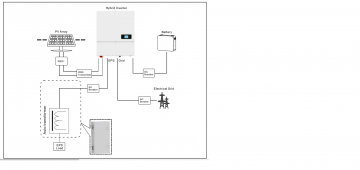timselectric
If I can do it, you can do it.
- Joined
- Feb 5, 2022
- Messages
- 18,637
That's a major issue for bypass mode.If you are grid tie, why don't just use L1 and L2 from grid and use the autotransformers for neutral? in other words don't use the neutral that came from grid and let the autotransformers provide the Neutral when is in bypass mode and off-grid mode.
All of the unbalanced load is going to be on the ground conductor.




